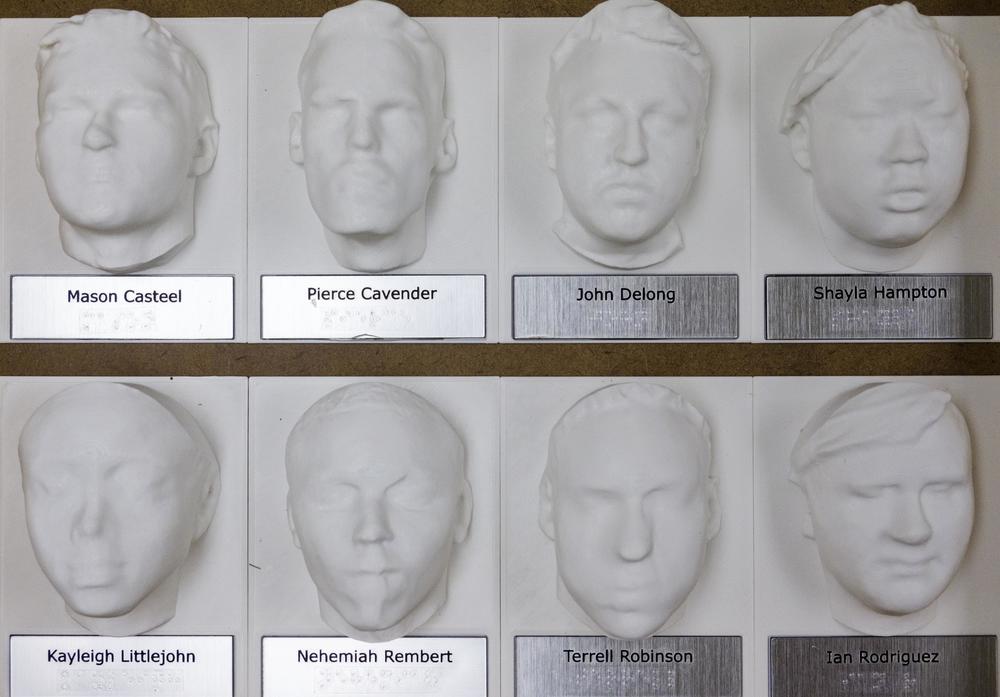
Caption
Portraits of the Class of 2023 from the Georgia Academy for the Blind.
Credit: Grant Blankenship / GPB News
When Daquan Brown was handed his yearbook, he could hardly believe it.
“Your head is right here,” Mercer University engineering student Hannah Higgins said. “This one is yours. You can just touch it with your hand. That's your face.”
Brown took it in with both his fingers and with his eyes held inches away from where Higgins directed him.
“I get to keep this?” he asked Higgins.
“Yeah! It’s for you!” she responded.
What Brown held was a box, about two feet by two feet, with eleven little heads mounted inside, one for him and each of the other seniors at the Georgia Academy for the Blind in Macon.
“It's like a bobblehead, but like myself,” Brown said after a little more time. Apparently he felt it was a pretty accurate bobblehead.
“It looks like me!" Brown said. "That's crazy. That's me.”
Yearbooks — and yearbook photos — are a huge part of how we remember our school years. But for visually impaired students, capturing the physical essence of friends is a challenge.
For six years now, Mercer University engineering students have been using technology to meet the need by making 3D yearbooks.

Portraits of the Class of 2023 from the Georgia Academy for the Blind.
“So they pretty much sit in a chair and then you have a handheld 3D scanner,” student Katie Puckett said. “We go around their faces to get the model, and then we use a program where we smooth the faces.”
The computer does a little creative interpretation where the scanner misses things. Then the model is printed in plastic into what look like lightly ridged marble busts that could fit in your hand. Names are printed in Braille underneath.
A graze of fingers across a forehead helped Shayla Hampton find her likeness.
“Yeah, I could tell this one's me because of my hair,” she said.
Her scan caught her distinctive braids. Hampton said she’s not sure what she will do with the yearbook.
“Knowing my mother, she's probably going to hang it up on the wall,” she said.
As one would expect a proud mother to do.